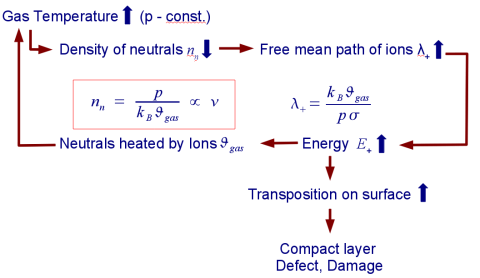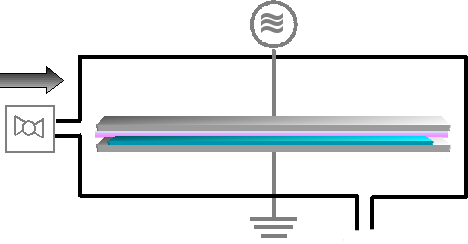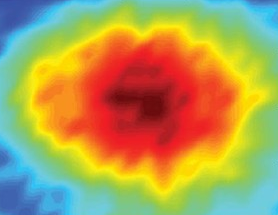|
The uniformity of the plasma is determined through three major effects:
|
- 1. The density of reactive species depending on the
gas flow distribution.
- 2. RF standing wave effect providing usually a
maximum deposition rate in in the center.
- 3. RF skin effect causing a increased deposition rate
at the substrate edges.
|
- Standing
wave and skin effect depend mainly on plasma parameters and gas
temperature.
- Real RF power in the plasma ↔ Layer
thickness Uniformity
|

|
Plasma process models save development costs:
|
- Test panels
- Tool time used for development
- Consumables (like gas, pumps, ...)
|

Schematical setup
of plasma deposition tool
for PECVD in Solar Cell Manufacturing
|
a-Si layer thickness
|
RF power distribution
|

|
|
Ariel Ben-Porath, Benny Shoham,
BrightView systems
'Increasing cell
efficiency and optimizing productivity using wide area metrology'
Photovoltaics
World, March/April 2010
|
Simulation:
Plasmetrex GmbH
|
Performance:
Large area plasma modelling (Solar cell manufacturing)
Approach
- Target: Plasma
parameters and their uniformity
- Ansatz: RF field
simulation in plasma (Maxwell Equations, Poisson Equation)
- Fluid model with
first two moments of Boltzmann Equation
- Need
analytical solution
for complex Helmholtz equation, provides also the
basement of a
nonlonear and robust sensor model for measured harmonics in the RF
discharge current
Large electrode area
- up to 2200 mm x 2600 mm
- Typical electrode gap: 15 mm
- Wall temperature: 175 °C
- Process gases: SiH4, H2,
...+PH3, NF3 for chamber
cleaning
Expected results
- Large area
plasmas show special effects
- Standing plasma wave, no vacuum wave
- Skin effect in
plasma
Results
- Axial and
radial RF current is non-uniform, depending on plasma parameters.
- Spatially
varying RF power dissipation in plasma bulk (electrons - chemistry) and
boundary sheath (ion - physics)
- Non-uniformity
of deposition rate and layer structure
|


